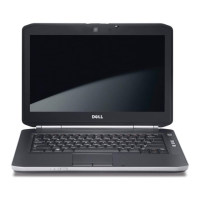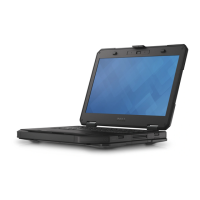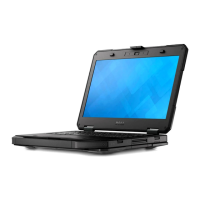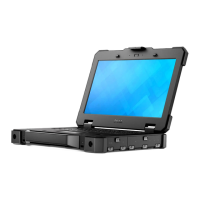1. Memory Stick
2. Secure Digital (SD)
3. Secure Digital High Capacity (SDHC)
4. Secure Digital eXtended Capacity(SDXC)
UEFI BIOS
UEFI is an acronym for Unified Extensible Firmware Interface. The UEFI specification defines a new model for the interface between
personal computer operating systems and platform firmware. The interface consists of data tables that contain platform related
information, plus boot and runtime service calls that are available to the operating system and its loader. Together, these provide a
standard environment for booting an operating system and running pre-boot applications. One of the main differences between BIOS and
UEFI is the way applications are coded. Assembler was used if functions or applications had to be coded for the BIOS while a higher level
language code will be used to program the UEFI.
Dell UEFI BIOS implementation will supersede the existing two different sets of BIOS in the portables and desktop products into one single
UEFI BIOS moving forward.
Important Information
There is no difference in between the conventional BIOS and the UEFI BIOS unless the UEFI option is checked in the 'Boot List Option'
setting in the BIOS page. This will allow the user to create a UEFI boot option list manually without affecting the existing boot priority list.
With the implementation of UEFI BIOS, the changes are more related to the manufacturing tools and functionalities with very minimal
impact to the customer's usages.
Few things to remember are:
• If customers have a UEFI boot media and ONLY if they have UEFI boot media (either in the optical media or via USB storage), the
one-time boot menu will show an additional section listing the UEFI boot options. If they don't have UEFI boot media attached, they
will never see this option. Almost all will never get to see this option unless the UEFI boot option is specified manually through the
'Boot Sequence' settings.
• How to change Service Tag/Owner Tag?
When the service technician replaces a system board, he's required to set the service tag upon the system starts up at one time off
basis. Failure to set a service tag may result system battery not being able to charge. Therefore, it is very important that the service
technician set the correct system service tag. If a wrong service tag is set, there's no way to reset it and the technician will have to
place order for another system board replacement.
• How to change Asset tag information?
To change the Asset tag information, we can use one of the following software utilities.
Portables Technology Dell Command Configure toolkit
Customers may also report that after a motherboard replacement, the asset field is already populated in the system BIOS, and needs to be
cleared or set. For older systems and all newer systems with the UEFI BIOS platform, customers can download the Dell Command
Configure Toolkit (DCC) to customize the BIOS options or even change the ownership or asset tag from within Windows. This technology
is described in Software and Troubleshooting section.
Systems management - From on-premises to the
cloud
Dell Client Command Suite - a free toolkit available for download, for all OptiPlex and Latitude PCs at https://dell.com/command,
automates and streamlines systems management tasks, saving time, money, and resources. It consists of the following modules that can
be used independently, or with a variety of systems management consoles such as SCCM.
Dell Command | Deploy enables easy operating system (OS) deployment across all major OS deployment methodologies and provides
numerous system-specific drivers that have been extracted and reduced to an OS-consumable state.
Dell Command l Configure is a graphical user interface (GUI) admin tool for configuring and deploying hardware settings in a pre-OS or
post-OS environment, and it operates seamlessly with SCCM and Airwatch and can be self-integrated into LANDesk and KACE. Simply,
this is all about the BIOS. Command l Configure allows you to remotely automate and configure over 150+ BIOS settings for a personalized
user experience.
34
Technology and components

